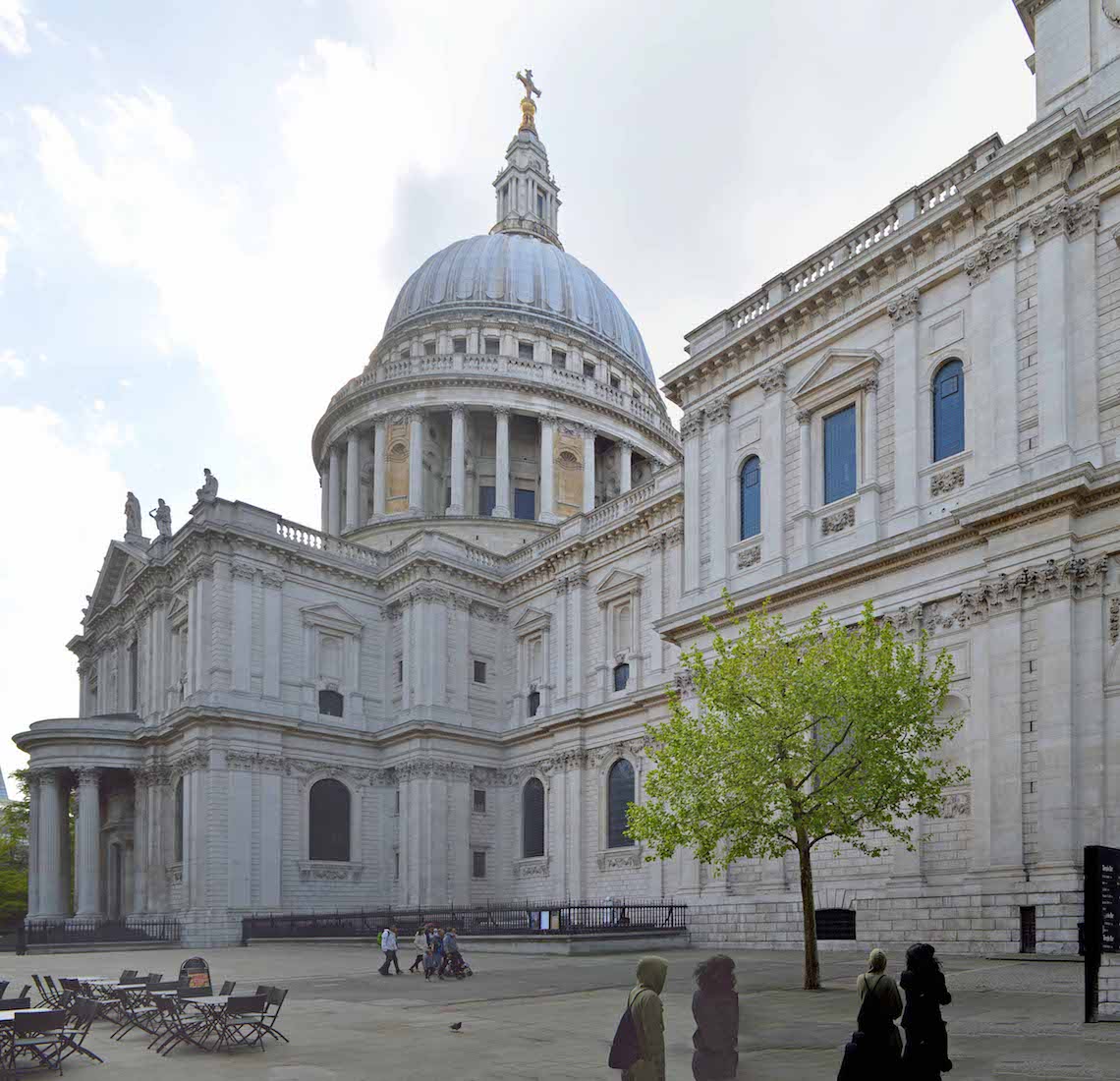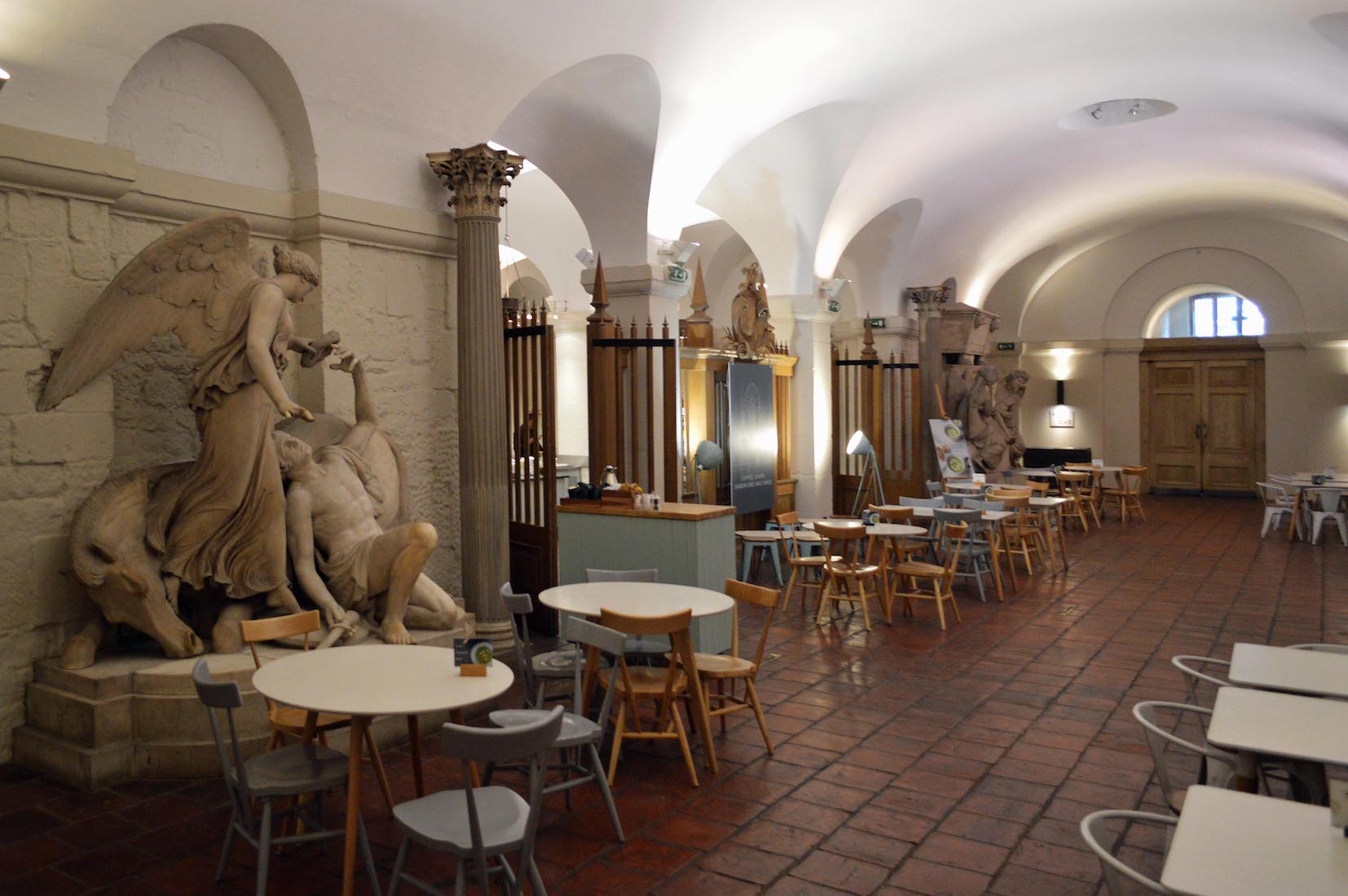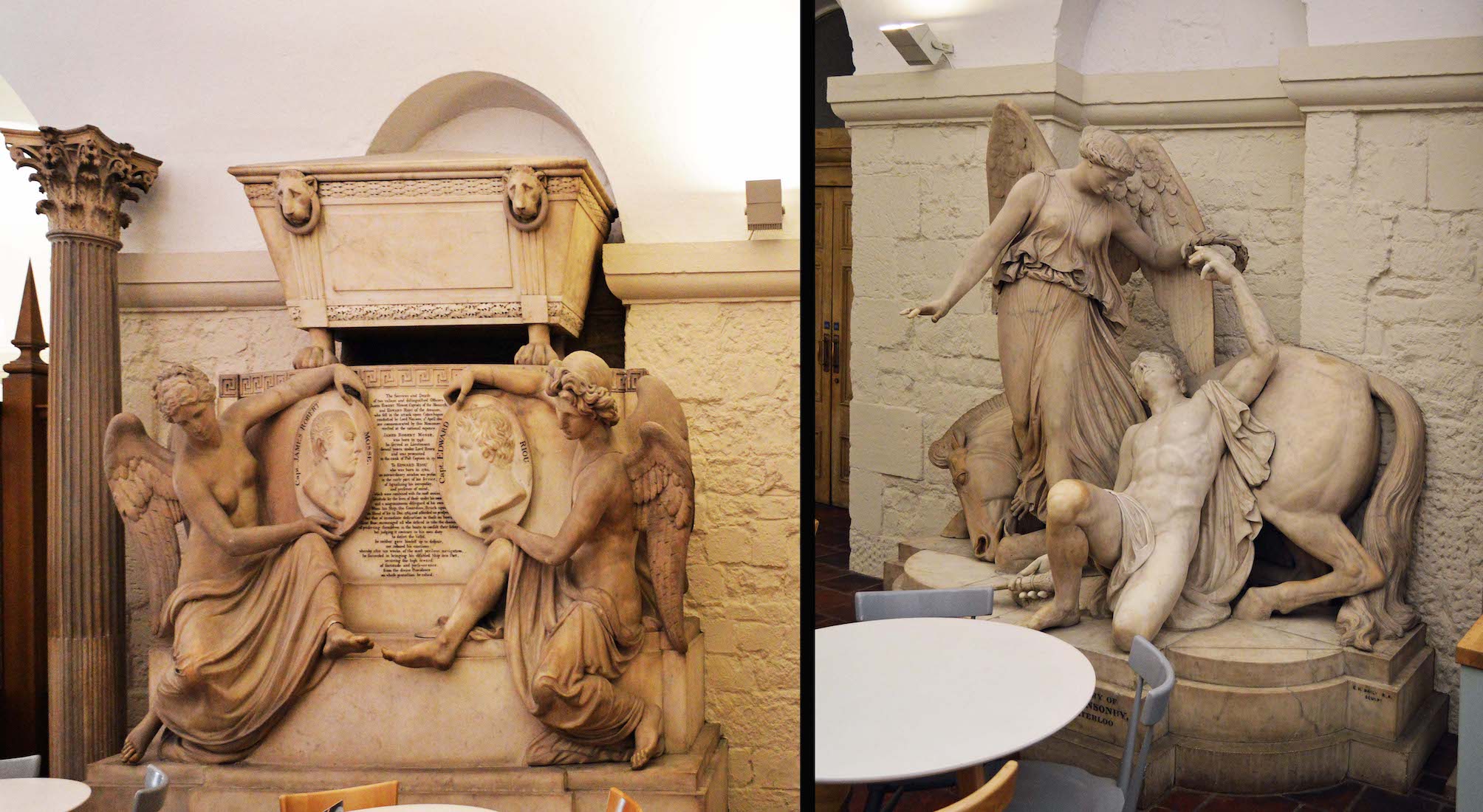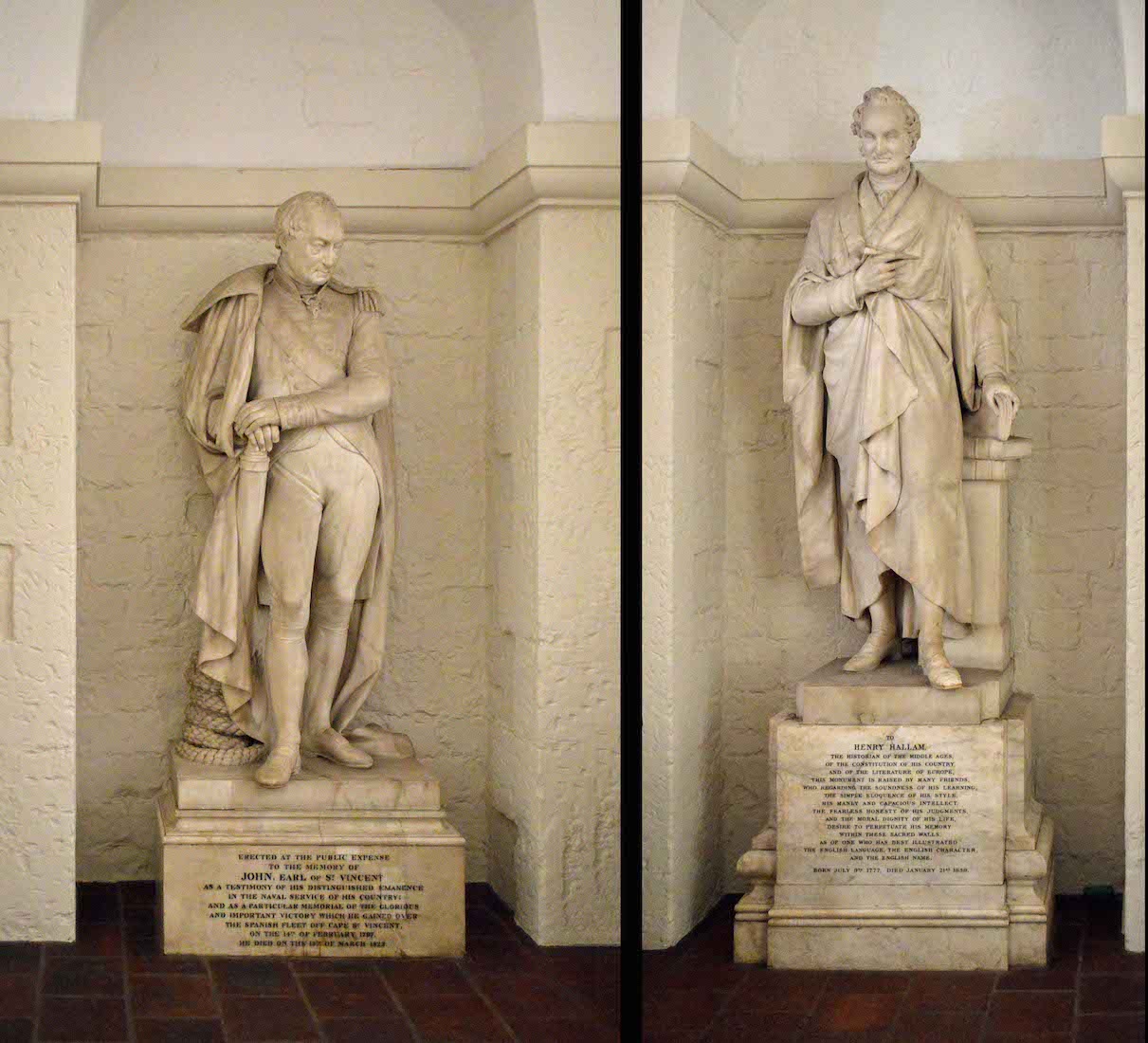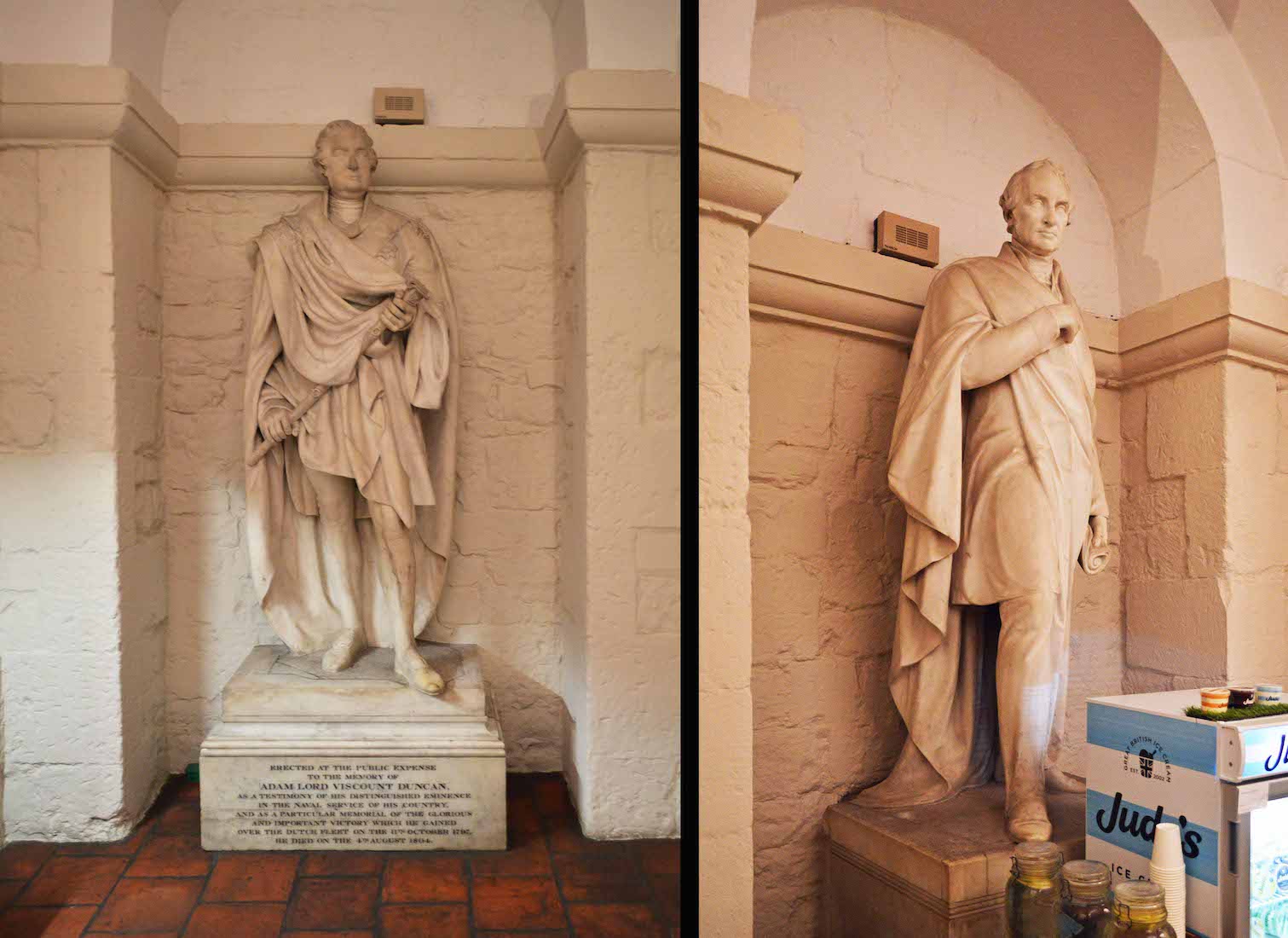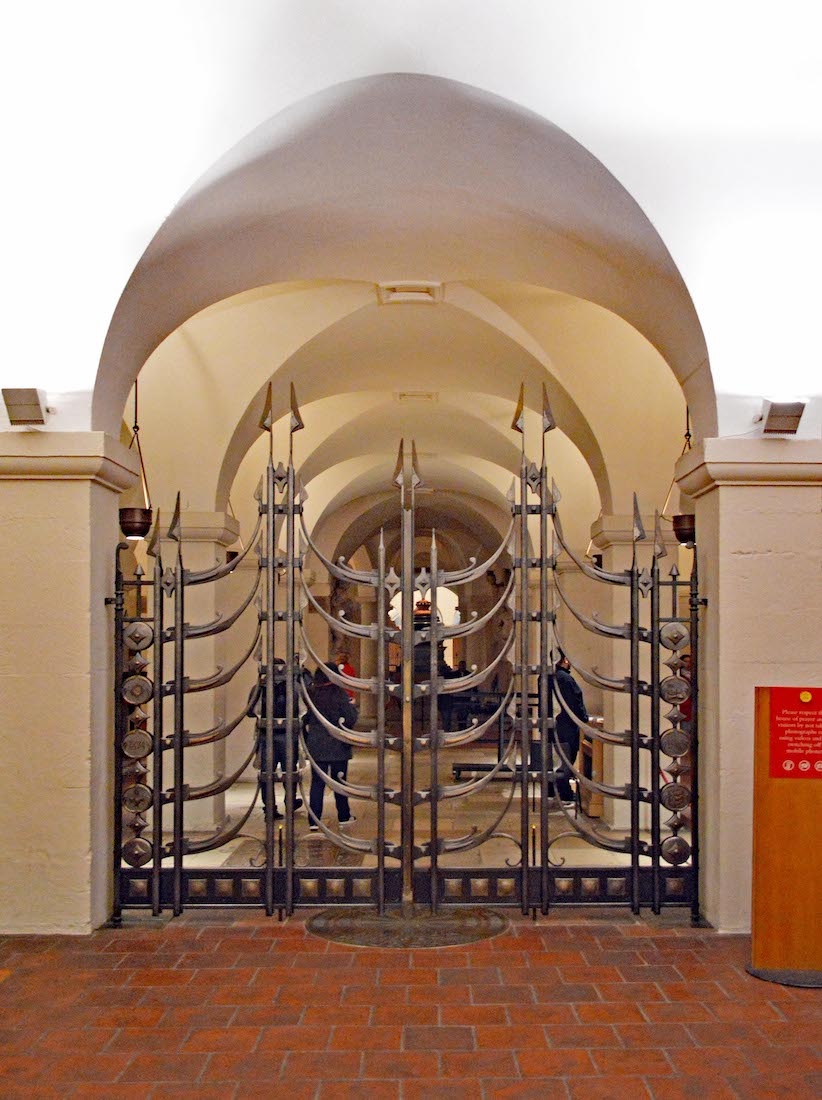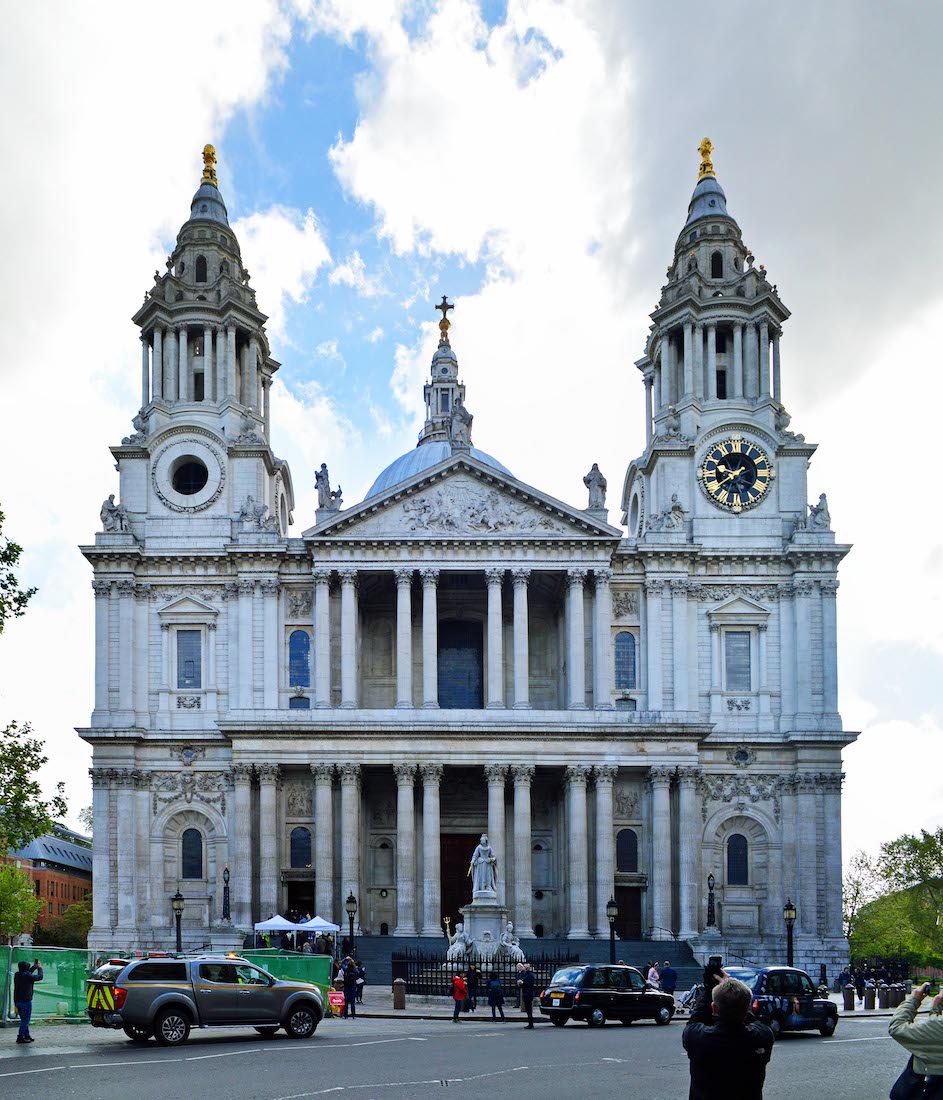
The West Front has two storeys. In the lower there is a row of Corinthian columns arranged in pairs, and in the second storey a similar series. On the triangular pediment above is a carving of the Conversion of St. Paul, while a statue of the saint crowns the apex, the other statues representing SS. Peter and James and the Four Evangelists. Two towers stand, one on each side of the front, and complete a superb effect. These contain a grand peal of twelve bells, one of which, called Great Paul, fashioned twenty years ago, is one of the largest in the world. Rich marble, brought from Italy and Greece, adorns the pavement. This wall has many interesting features: the St Paul scene, the decorations, the top statues, ... . . For a closer look, ZOOM IN
XT22. QUEEN ANNE STATUE
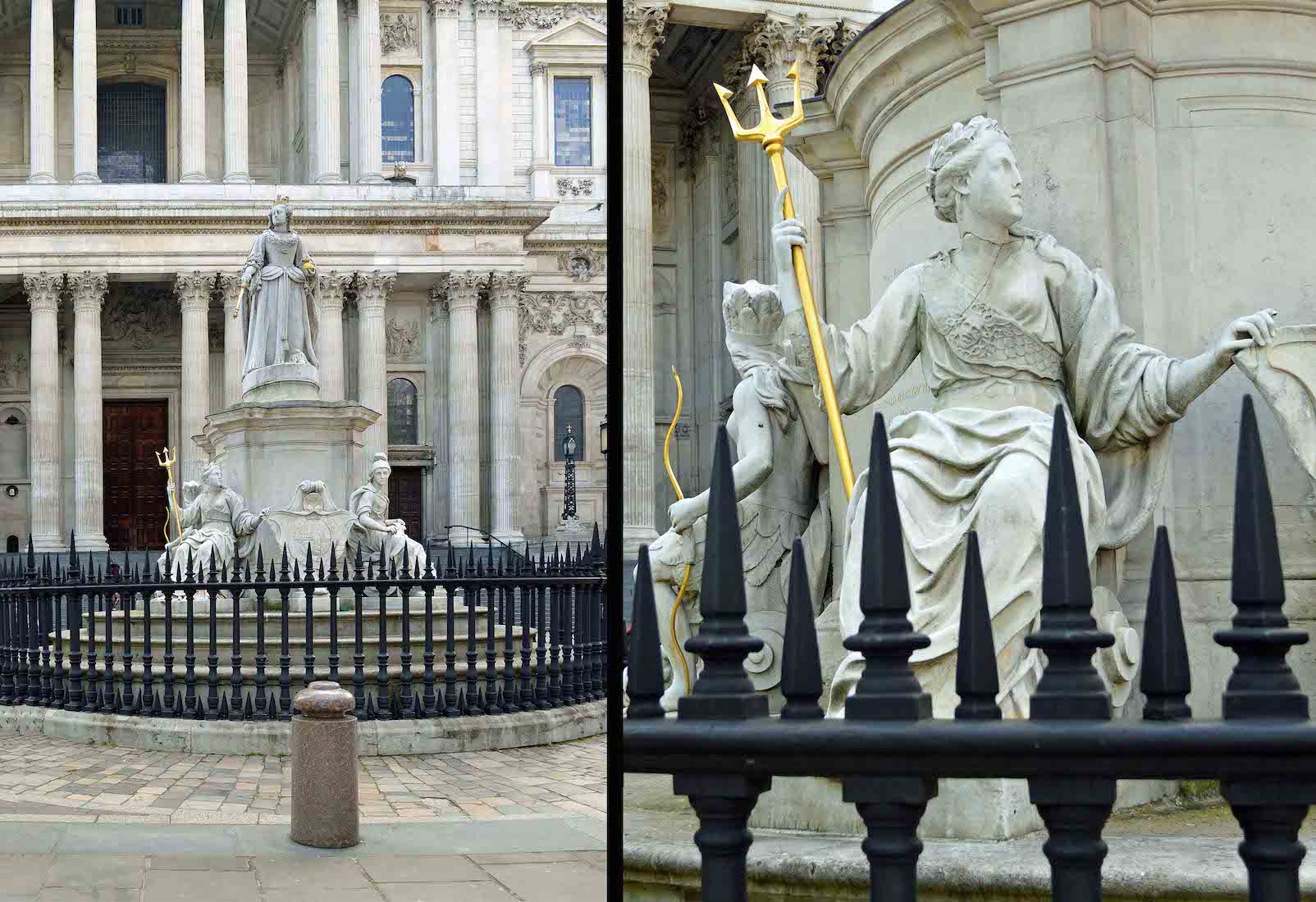
At the front of St Paul’s stands a large statue of Queen Anne. She is surrounded by four female figures around the base who represent: Britannia, France, America, Ireland. It was during Queen Anne’s reign that the rebuilding of St Paul’s was completed, after the 1666 Great Fire. The original statue was erected in 1712, an integral part of the design. It deteriorated and was replaced in 1886.
XT23. NORTH TRANSEPT
The pedestrian area around the North side of the Cathedral is called Paternoster Row. The area has a grand history, but was devastated by aerial bombardment during World War II. The street is supposed to have received its name from the fact that, when the monks and clergy of St Paul's Cathedral would go in procession chanting the great litany, they would recite the Lord’s Prayer (Pater Noster being its opening line in Latin) in the litany along this part of the route). From here we can view the North nave wall of the Cathedral.
XT24. CAFÉ WALL
The Café is reached by descending a short flight of steps near the Northwest corner of the Cathedral. It is a large area, and there are various statues lining the walls. Two can be seen here.
XT25. CAFÉ STATUES
At left is a monument to Captain James Robert Mosse and Captain Edward Riou, created by Charles Rossi in 1805. Mosse (1745–1801) was a British captain killed during his command at the Battle of Copenhagen during the Napoleonic Wars. He was also one of the prosecution during the trials of the participants of the Nore Mutiny. Edward Riou FRS (1762 –1801) was an officer of the Royal Navy who served during the French Revolutionary Wars under several of the most distinguished naval officers of his age, and won fame and honour for two incidents in particular.
XT26. JOHN JERVIS AND HENRY HALLAM
These two statues commemorate John, Earl of St Vincent, and Henry Hallam. ‘John’ was John Jervis, 1st Earl of St Vincent, Admiral of the Fleet. He was an admiral in the Royal Navy and Member of Parliament in the United Kingdom. Jervis served throughout the latter half of the 18th century and into the 19th, and was an active commander during the Seven Years' War, American War of Independence, French Revolutionary War and the Napoleonic Wars. He is best known for his victory at the 1797 Battle of Cape Saint Vincent, from which he earned his titles, and as a patron of Horatio Nelson. • Henry Hallam FRS FRSE FSA (1777 – 1859) was an English historian. Educated at Eton and Christ Church, Oxford, he practised as a barrister on the Oxford circuit for some years before turning to history. His major works were ‘View of the State of Europe during the Middle Ages’ (1818), ‘The Constitutional History of England’ (1827), and ‘Introduction to the Literature of Europe, in the Fifteenth, Sixteenth and Seventeenth Centuries’ (1837). Although he took no part in politics himself, he was well acquainted with the band of authors and politicians who led the Whig party. In an 1828 review of Constitutional History, Robert Southey claimed that the work was biased in favour of the Whigs. Hallam was a fellow of the Royal Society, and a trustee of the British Museum. In 1830 he received the gold medal for history founded by George IV.
XT27. ADAM DUNCAN AND MOUNTSTUART ELPHINSTONE
Two more statues ... . Adam Duncan, 1st Viscount Duncan (1 July 1731 - 4 August 1804) was a British admiral who defeated the Dutch fleet off Camperdown (north of Haarlem) on 11 October 1797. This victory is considered one of the most significant actions in naval history. • The Hon Mountstuart Elphinstone FRSE was Scottish and an historian, associated with the government of British India. He later became the Governor of Bombay where he is credited with the opening of several educational institutions accessible to the Indian population. Besides being a noted administrator, he wrote books on India and Afghanistan.
XT28. ENTRY TO CRYPT
A pair of gates at the back of the Café would lead us through to the crypt. This completes this limited tour of St Paul’s Cathedral. If and when I manage to get back to London, I look forward to completing this web project by photographing the interior of the Cathedral, and the crypt.


